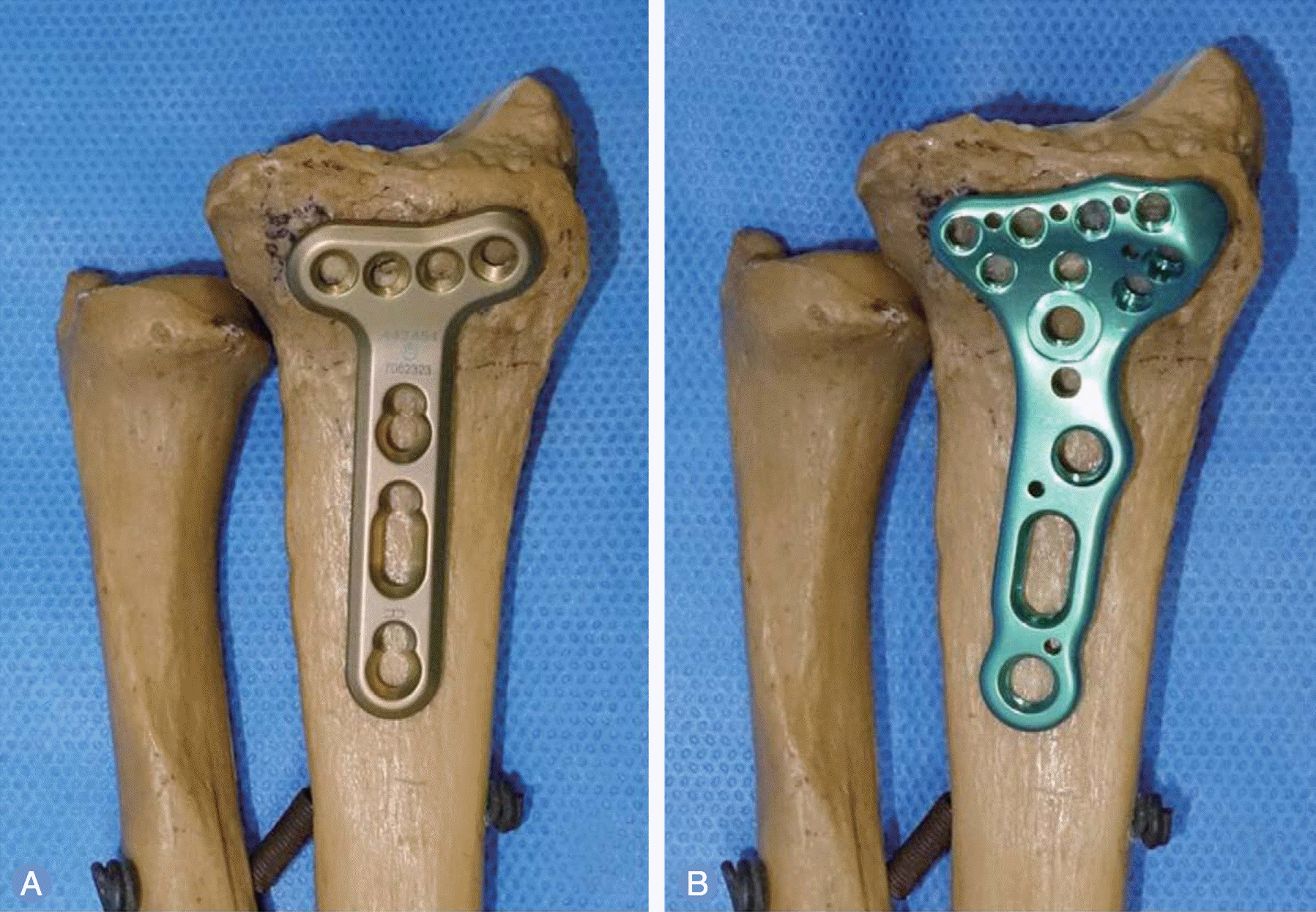Abstract
Purpose:
The purpose of this study was to determine whether the number of distal locking screws affected the final radiologic results after volar plate fixation for distal radius fractures.
Methods:
We retrospectively identified 176 patients (male, 36; female, 140; average, 60 years) who had distal radius fractures treated with open reduction and volar plate fixation between 2011 and 2012. The number of screws used for distal fixation was determined according to the surgeon's preference and the type of plate used. Radiologic parameters and their displacements were measured postoperatively and at final follow-up. The results of using 4 or 5 distal locking screws were compared with those of using more than 6 distal locking screws.
Results:
There was no significant displacement in fracture fragment when using 4 or 5 distal locking screws compared with using more than 6 distal locking screws. Mean displacement in ulnar variance was 0.6 mm in group with less than 5 screws, and the displacement was 0.4 mm in group with more than 6 screws (p=0.772). Secondary displacement was not correlated with fracture type or the number of distal locking screws. There was no fixation failure during the study period.
Go to : 
REFERENCES
1. Chung KC, Spilson SV. The frequency and epidemiology of hand and forearm fractures in the United States. J Hand Surg Am. 2001; 26:908–15.

2. Park C, Ha YC, Jang S, Jang S, Yoon HK, Lee YK. The incidence and residual lifetime risk of osteoporosis-related fractures in Korea. J Bone Miner Metab. 2011; 29:744–51.

3. MacDermid JC, Roth JH, Richards RS. Pain and disability reported in the year following a distal radius fracture: a cohort study. BMC Musculoskelet Disord. 2003; 4:24.

4. Jupiter JB, Lipton H. The operative treatment of intraarticular fractures of the distal radius. Clin Orthop Relat Res. 1993; (292):48–61.

5. Osada D, Kamei S, Masuzaki K, Takai M, Kameda M, Tamai K. Prospective study of distal radius fractures treated with a volar locking plate system. J Hand Surg Am. 2008; 33:691–700.

6. Rozental TD, Blazar PE. Functional outcome and complications after volar plating for dorsally displaced, unstable fractures of the distal radius. J Hand Surg Am. 2006; 31:359–65.

7. Mehling I, Muller LP, Delinsky K, Mehler D, Burkhart KJ, Rommens PM. Number and locations of screw fixation for volar fixed-angle plating of distal radius fractures: biomechanical study. J Hand Surg Am. 2010; 35:885–91.

8. Moss DP, Means KR Jr, Parks BG, Forthman CL. A biomechanical comparison of volar locked plating of intraarticular distal radius fractures: use of 4 versus 7 screws for distal fixation. J Hand Surg Am. 2011; 36:1907–11.

9. Kreder HJ, Hanel DP, McKee M, Jupiter J, McGillivary G, Swiontkowski MF. X-ray film measurements for healed distal radius fractures. J Hand Surg Am. 1996; 21:31–9.

10. Orbay JL, Fernandez DL. Volar fixation for dorsally displaced fractures of the distal radius: a preliminary report. J Hand Surg Am. 2002; 27:205–15.

Go to : 
 | Fig. 1.Volar locking plates used in this study. (A) LCP volar extra-articular distal radius plate (DePuySynthes, West Chester, PA, USA) with single row of 4 or 5 distal locking screws. (B) Acu-Loc plate (Acumed, Hillsboro, OR, USA) with double row of 6 to 9 distal locking screws. |
Table 1.
Radiologic results of the group I which was used less than 5 distal locking screws for fixation of distal radius fractures
Table 2.
Radiologic results of the group II which was used more than 6 distal locking screws for fixation of distal radius fractures




 PDF
PDF ePub
ePub Citation
Citation Print
Print


 XML Download
XML Download